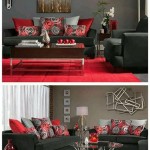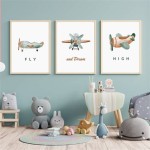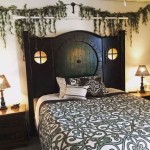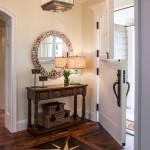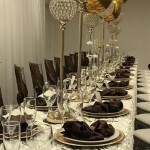Simple Drawing Room Wall Decoration Ideas
The drawing room, often referred to as the living room, serves as a focal point within a home. It is a space where families gather, entertain guests, and relax. Consequently, the aesthetic appeal of the drawing room significantly impacts the overall ambiance of the home. Wall decoration plays a crucial role in shaping this ambiance, influencing the perceived size, character, and mood of the room. Simple yet effective wall decoration ideas can transform a drawing room from a mundane space into an inviting and stylish environment. This article explores various accessible and impactful methods for enhancing drawing room walls, catering to diverse tastes and budgets.
A well-decorated drawing room reflects the homeowner's personality and style. It can communicate a sense of sophistication, warmth, or creativity, depending on the chosen décor elements. Therefore, careful consideration should be given to selecting wall decorations that complement the existing furniture, lighting, and overall architectural style of the room. The goal is to create a cohesive and harmonious space that is both visually appealing and functional.
Many homeowners are deterred from decorating their drawing rooms due to perceived complexity and expense. However, numerous simple and affordable options exist that can significantly enhance the visual appeal of the walls. These options range from strategically placed artwork to creative paint techniques and the incorporation of natural elements. By exploring these ideas, homeowners can personalize their drawing rooms without requiring extensive renovations or large financial investments. The key is to focus on creating a focal point and then building around that element, ensuring a balanced and visually pleasing result.
Strategic Use of Artwork
Artwork serves as a cornerstone of drawing room wall decoration. Well-chosen pieces can instantly elevate the aesthetic and add personality to the space. The selection of artwork should be guided by personal taste and the overall style of the room. Consider the size, color palette, and subject matter of the artwork to ensure it complements the existing décor.
One effective approach is to create a gallery wall, which involves arranging multiple pieces of art together in a cohesive display. This can be achieved by selecting pieces with a common theme, color scheme, or framing style. Alternatively, a more eclectic approach can be adopted, mixing different styles and sizes to create a visually interesting arrangement. The spacing between the artworks is crucial for creating a balanced and appealing gallery wall. It is generally recommended to maintain a consistent spacing of a few inches between each piece.
Another option is to focus on a single statement piece of artwork. This can be a large painting, a striking photograph, or a unique sculpture. A statement piece serves as a focal point in the room, drawing the eye and creating a sense of visual interest. When selecting a statement piece, consider the size and scale of the wall to ensure it is appropriately proportioned. The artwork should be large enough to make an impact but not so large that it overwhelms the space.
Framing plays a significant role in the overall presentation of artwork. The choice of frame should complement the artwork and the surrounding décor. Simple, minimalist frames are often a good choice for contemporary spaces, while more ornate frames may be suitable for traditional settings. The color of the frame should also be considered, as it can either blend in with the wall or provide a contrasting accent.
The placement of artwork is equally important. Hang artwork at eye level to ensure it is easily viewed and appreciated. The height of the artwork should be adjusted based on the height of the individuals who will be using the room. Consider the lighting in the room when positioning artwork. Avoid placing valuable artwork in direct sunlight, as this can cause fading and damage over time.
Creative Paint Techniques
Paint is a versatile and cost-effective tool for transforming drawing room walls. Beyond simply applying a fresh coat of paint, creative paint techniques can add depth, texture, and visual interest to the space. These techniques can be tailored to suit different styles and preferences, ranging from subtle and sophisticated to bold and dramatic.
One popular technique is using textured paint. This involves applying paint with a special brush or tool to create a textured surface. Textured paint can add depth and dimension to walls, creating a more tactile and visually engaging space. Different types of textured paint are available, each with its unique effect. Some textured paints create a subtle, stucco-like finish, while others create a more pronounced, three-dimensional effect.
Another technique is using stencils to create patterns on the walls. Stencils can be used to apply intricate designs, geometric shapes, or floral motifs. This technique allows for a high degree of customization, as stencils can be custom-made to suit specific preferences. Stenciling is a relatively simple and inexpensive way to add a touch of personality and style to drawing room walls.
Color blocking is another effective paint technique. This involves dividing a wall into different sections and painting each section a different color. Color blocking can be used to create bold, graphic designs or more subtle, gradient effects. When using color blocking, it is important to choose colors that complement each other and create a harmonious overall effect. Consider the existing furniture and décor in the room when selecting colors for color blocking.
Ombre painting is a technique that involves gradually blending one color into another. This technique creates a soft, dreamy effect that can add a sense of depth and dimension to walls. Ombre painting is particularly well-suited for creating a calming and relaxing atmosphere in the drawing room. When using ombre painting, it is important to choose colors that are closely related in hue to ensure a seamless transition.
Faux painting techniques, such as sponging and rag rolling, can also be used to add texture and visual interest to walls. These techniques involve applying paint with a sponge or rag to create a mottled, uneven surface. Faux painting techniques can be used to mimic the look of natural materials, such as stone or wood.
Incorporating Natural Elements
Bringing natural elements into the drawing room can create a sense of tranquility and connection to the outdoors. Natural elements can add warmth, texture, and visual interest to the space, creating a more inviting and relaxing atmosphere. Incorporating natural elements into wall decoration can be achieved in various ways, ranging from hanging plants to using natural materials.
One effective way to incorporate natural elements is to create a living wall. A living wall is a vertical garden that is installed on a wall. Living walls can be created using a variety of plants, ranging from succulents to ferns to flowering plants. Living walls not only add visual interest but also improve air quality and create a sense of well-being. They do require regular maintenance and a proper watering system.
Another option is to hang potted plants on the walls. Hanging plants can add a touch of greenery and create a sense of depth and dimension. A wide variety of hanging planters are available, ranging from simple macramé hangers to more elaborate ceramic pots. Choose plants that are well-suited to the lighting conditions in the drawing room. Plants that thrive in low light conditions are a good choice for rooms that do not receive much natural light.
Using natural materials, such as wood and stone, is another way to incorporate natural elements into wall decoration. Wood paneling can add warmth and texture to walls, creating a more rustic and inviting atmosphere. Stone veneer can be used to create a feature wall that mimics the look of natural stone. These materials bring an element of the outdoors in, creating a comforting and grounded atmosphere.
Driftwood can be used to create unique and eye-catching wall decorations. Driftwood can be arranged in various ways to create sculptures, mobiles, or wall hangings. The natural texture and shape of driftwood add a touch of organic beauty to the drawing room. Incorporating items like woven baskets or straw mats can also bring in natural textures and tones.
Framed botanical prints or pressed flowers are a simple and elegant way to incorporate natural elements into wall decoration. These prints or arrangements can add a touch of color and botanical beauty to the drawing room. The frames can be chosen to complement the existing décor and enhance the overall aesthetic.
Ultimately, the selection of wall decoration ideas for a drawing room involves careful consideration of personal style, the existing décor, and the overall desired ambiance. By exploring different options and experimenting with various techniques, homeowners can create a personalized and visually appealing space that reflects their unique taste and enhances their living experience.

10 Brilliant Living Room Wall Decor Ideas Designcafe

10 Brilliant Living Room Wall Decor Ideas Designcafe

Living Room Wall Decoration Ideas 2025 For Modern And Luxury Feel Shaghaf Home

Simple Inexpensive Solution For A Big Blank Wall Thistlewood Farm

Top Living Room Wall Decor Ideas To Explore In 2025

Living Room Decoration

40 Simple But Fashionable Living Room Wall Decoration Ideas Bored Art

Top Living Room Wall Decor Ideas To Explore In 2025

20 Must Try Living Room Design Ideas For A Cozy Home

27 Stunning Living Room Wall Decor Ideas Displate Blog

